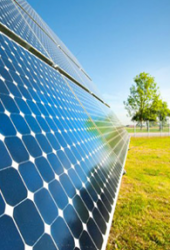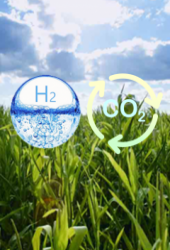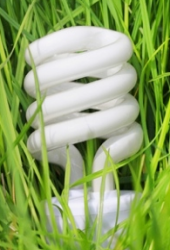Detail:
- ABSTRACT
In Thailand, the investment in residential rooftop solar power systems is still not attractive because there is still a lack of support measures for this market segment. The support measures that the government has put in place to date have been focused primarily on large-scale solar farm investment and caused many problems both for the investors and ratepayers. This study hence designs a fixed feed-in tariff measure (FiT) to support residential-scale rooftop solar systems installation. A fixed FiT is an electricity purchasing price that reflects the investment costs of different renewable energy technologies. Three rates of FiT are proposed to provide attractive returns for three levels of income groups. The FiT measure will result in negligible impacts on ratepayers, given the current residential rooftop target specified in Thailand’s Alternative Energy Development Plan.
KEYWORDS : Solar, Feed-in tariff, adder, Thailand, energy policy
- ABSTRACT
This research concern on GHGs emissions emitted from aviation sector which effect on climate change. The objective are analysis of the energy consumption and assessment of the greenhouse gas emissions of the Thailand commercial aircraft under a Landing and Take-Off cycle [LTO] and cruise by analyze and assess on base year [2011] and project forward to 2020. The results showed that 495,037.13 tons of fossil fuel consumption and greenhouse gas emissions is up to 1,577,922.75 ton CO2e. In short term review, the technology change could not be achieved on the formulation of proposals to address greenhouse gases emissions from international aviation. It is likely that the aviation biofuels are one of the most promising solutions to meet airline’s ambitious carbon emissions reduction goals. The alternative fuels allow airlines to reduce GHGs emissions, ease their dependence on fossil fuels and offset the risks associated with the high volatility of oil and fuel prices. The results of study is a guildline for the sustainable technology development and greenhouse gases emissions reducing as well as management information for consideration to increase energy efficiency in the air transportation.
KEYWORDS : GHGs Emission, Aircraft emission, Energy Efficiency, Aviation Alternative Fuel.
- ABSTRACT
The coal quality to be used as fuel in power plant under air quality standards conditions was found to depend on various factors like thermal efficiency of power plant, heating value of coal, sulfur content in coal, ash content of coal, and efficiency of air pollution control units (APC). When focusing on these results, it would be found that If size of power plant was less than 50 megawatts, thermal efficiency was 40 percent, efficiency of APC for Sulfur Dioxide and Particulate Matter were 96 and 99 percent, respectively, In case of heating value of coal was 3,200 kcal/Kg, sulfur and ash content of coal should not be more than 0.73 and 2.61 percent, respectively, In case of heating value of coal was 5,000 Kcal/Kg, sulfur and ash content of coal should not be more than 1.13 and 4.07 percent, respectively, and In case of heating value of coal was 6,000 Kcal/Kg, sulfur and ash content of coal should not be more than 1.36 and 4.89 percent, respectively, If size of power plant was more than 50 megawatts, thermal efficiency was 40 percent, and efficiency of APC for Sulfur Dioxide and Particulate Matter were 96 and 99 percent, respectively, In case of heating value of coal was 3,200 kcal/Kg, sulfur and ash content of coal should not be more than 0.36 and 2.61 percent, respectively, In case of heating value of coal was 5,000 Kcal/Kg, sulfur and ash content of coal should be less than 0.57 and 4.07 percent, respectively, and In case of heating value of coal was 6,000 Kcal/Kg, sulfur and ash content of coal should be less than 0.68 and 4.89 percent, respectively, In term of potential capacity of coal fire power plant in the study area (29 provinces), there were 8 provinces which would be able to carry these capacities within air quality conditions.
KEYWORDS : Coal Quality, Sulfur content, Ash content, Heating Value, Thermal Efficiency, Air Quality
- Abstract
This objective of this research was to study and develop the biofuel or briquette fuel from wet cake of the wastewater in ethanol industrial and improve the quality of briquette fuel by adding the other biomass that come from the hard shell of fruit (mangosteen shell, durian shell and coconut shell) to improve the efficiency and property of briquette fuel. This research was separated in to 3 parts. The first was study and make the briquette fuel co-production from wet cake of ethanol industrial and fruit shell in different ratio. The second part was analyzing the produced briquette fuel that have the best quality with the wet cake are the main component. And the last was economy analysis. From the result, The briquette fuel from 100% wet cake from wastewater of ethanol industrial has the heating value 3,851.3 cal/g, Ash 34.3% Fixed carbon 30.2%, Volatile matter 33.2% and moisture 5.3% with this parameter the wet cake does not meet the quality standard, it need to improve and develop to meet standard for the makeup of coal and firewood. In this research, the researcher was added the biomass (mangosteen shell, durian shell and coconut shell) to the briquette fuel from wet cake in 5 ratios (9:1, 8:2, 7:3, 6:4 and 5:5) of 3 samples. From the results, show the best ratio was the 5:5 all three samples with the highest heating value and fixed carbon with the addition biomass in the sample and also decreases the ash content and volatile matter. The highest heating value was briquette fuel co-production with coconut shell and follow with mangosteen shell and durian shell. From the economic analyze the briquette fuel at ration 5:5 that it have the value of investment and a payback in less time. The results of this research can contribute to the promotion and development of the waste materials from the production and consumption of agricultural utilized cost-effectively and is another way to reduce the environmental problems the other way.
KEYWORDS : Wet cake, ethanol biofuel, co-production, briquette
- Abstract
This paper describes a new design strategy for a multiarea Automatic Generation Control (AGC) system and a procedure for solving it using the method of inequalities. In this strategy, electricity market constraints are taken into consideration in order to increase technical and economical reliability of the system. The design problem is formulated as a set of inequalities in accordance with the multiobjective nature of the problem. As a result, the design can be carried out in an effective way.
KEYWORDS : Automatic generation control, Ancillary service, Method of inequalities, Control systems design
Volume : 10 Issue : 3 Year : 2013





